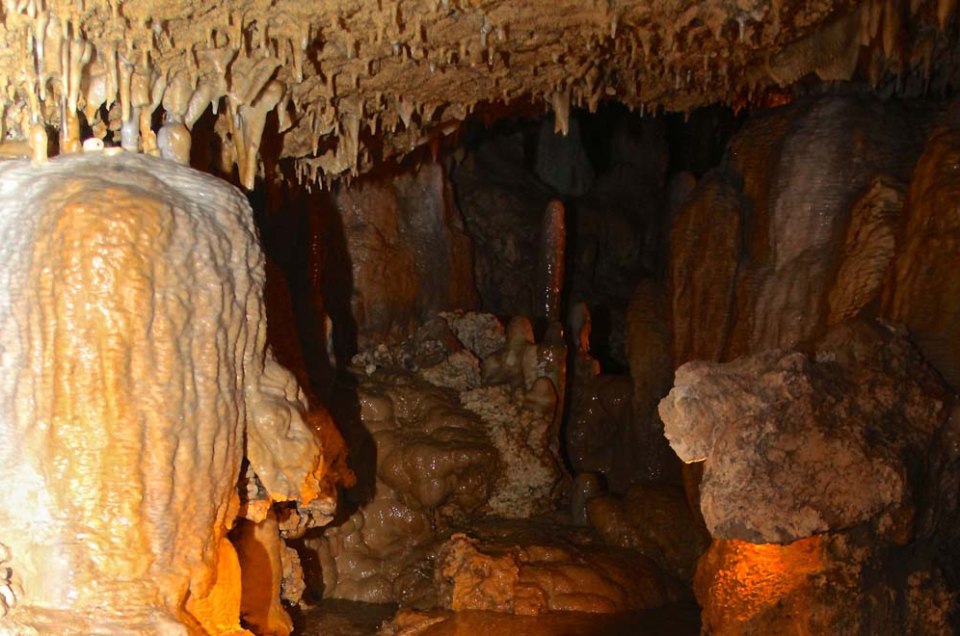Why do they always do that? Turn out the lights once you’re deep inside a cave just to prove how dark total darkness is.
Of course, some people love it, squeal with delight and ooh and aaah appropriately. I’m not one of those people. I grit my teeth and try not to hyperventilate as I count to ten, waiting for the lights to come back on.
Yes, I admit it. I’m a wuss. I’m a little claustrophobic and thus, don’t get too excited about cave tours. Despite that, I highly recommend a tour of Harrison’s Cave, one of the premiere attractions – besides the beaches – on the island of Barbados.
Located in the central highlands parish of St. Thomas, Harrison’s Cave has been called by some “one of the seven wonders of the Caribbean.” I can agree with that.
Caves are prevalent throughout the Caribbean, including Barbados. That’s what happens after thousands of years of water pounding on and dripping into the volcanic surfaces where many of the Caribbean islands originated. Barbados, the farthest east of the Lesser Antilles, was not formed by volcanic eruptions, but instead by shifts in the earth’s plates. Nonetheless, the central highlands are peppered with caves and Harrison’s Cave is the biggest and most accessible.
A visit to Harrison’s Cave is so much more than looking at stalactites and stalagmites. In 2010, the Barbados government dedicated an expansive new visitors center that explains the geology of the region and how that geology has influenced the culture and lifestyle of those who call Barbados home.
From the visitors center, you can take an elevator down about 150 feet to the entrance of the cave. Or you can do as we did – follow the trail and a number of steps through the mini-rain forest, stopping to read signs about the various plants, trees and flowers that we passed. We were told we might see the famous Barbados green monkeys that populate the island, and sure enough, a couple of babies went scampering away as we crossed their path.
Once at the bottom, there’s a wonderful plaza filled with more interpretive exhibits, including the bearded fig tree from which Barbados gets its name. A snack shop and several locally-owned gift shops line the plaza, which is filled with picnic tables and shaded areas in which to relax and enjoy the setting.
The call came for our tour of the cave, so we joined about 50 other people to fill a tram car that would carry us about 160 deep into Harrison’s Cave. The cave gets its name from Thomas Harrison who owned much of the land in this area in the 1700s. For generations, speleologists from around the world have come to explore, but it was not until 1981 that the cave opened for public tours.
It was all very interesting, safe and spacious, until they turned the lights out. Gosh, I hate it when they do that. But I loved the beautiful waterfalls and underground lakes and the patience of Mother Earth in creating these magnificent spaces. And I respect the curiosity of those explorers who first crawled into these holes just to see what they could find.
Most visitors to Harrison’s Cave do as we did – explore the cave via the 45-minute tram ride. But that’s not enough for some people. Those are the ones who return on Saturdays for a “walking” tour of the cave. Of course, very little of it is actual walking. I’m told they crawl on their hands and knees and wiggle on the stomachs into some of the most spectacular rooms of the cave – places that I guess I’ll never see except through their pictures and words.
But that’s OK. I’m glad I saw what I did of Harrison’s Cave, and everything else on the island of Barbados. And maybe if I do it enough, I won’t freak out the next time someone turns the lights out.
